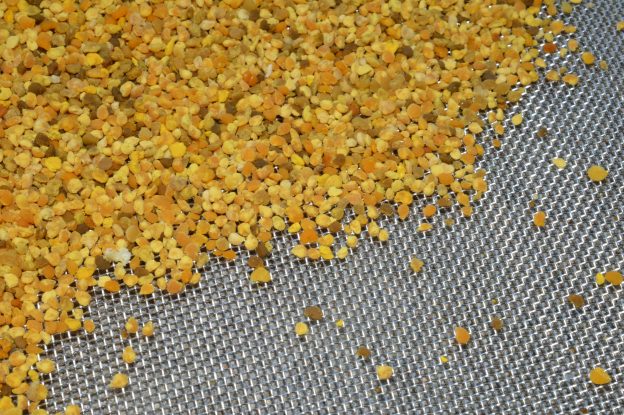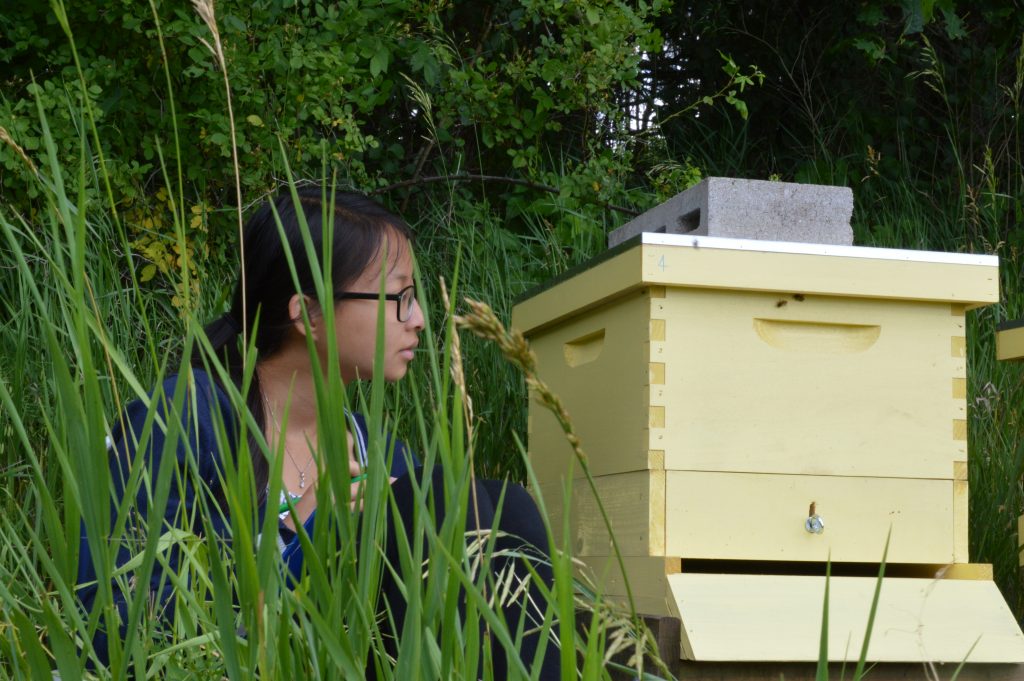Written by Rachael Bonoan, Biology Ph.D. Candidate
Imagine if your diet changed with the seasons. And it was out of your control.
During the spring, you can only eat cheese pizza. That’s it.
During the summer, you can eat pizza with any toppings you want. Finally, you have variety!
During the fall, you can either eat mushroom pizza or pepperoni pizza. No more variety.
And then during the winter, you must survive on any leftover pizza you might have saved.
That’s essentially what it’s like for honey bees.
I study nutritional ecology in honey bees; I am interested in how seasonal changes in honey bee diet affect honey bee behavior and health. Honey bees get most of their nutrients from nectar and pollen in flowers. Their diet naturally shifts with the seasons, and they have no control over it.
In New England, honey bees start the spring with mainly dandelions. In the summer, they have lots of diverse wildflowers and weeds to choose from. In the fall, there is basically only golden rod and aster available. And then in the winter, honey bees survive on the honey they made from the nectar they collected throughout the year. Their leftovers are really important.
This past summer, my interns and I set up 9 bee hives at the Tufts University Cummings School of Veterinary Medicine (more on that here). Once our hives were set up, 3 hives were left alone as our control hives, 3 hives were fed a semi-synthetic protein-diverse diet, and 3 hives were fed a semi-synthetic protein-deficient diet. The protein-diverse diet represented a diet made up of lots of flowers, or a polyfloral diet. The protein-deficient diet represented a diet made up of just one type of flower, or a monofloral diet.
Throughout the summer, we asked a couple questions.
First, would the bees fed the monofloral diet spend more time looking for food than the bees fed the polyfloral diet? To answer this question, we sat outside each hive and counted the number of bees leaving the hive. Since bees only leave the hive when they’re on the hunt for food, these counts gave us a good idea about the time spent collecting food. With 9 hives to collect data from, I had a lot of help this summer. Data collection would not have been possible without my interns!
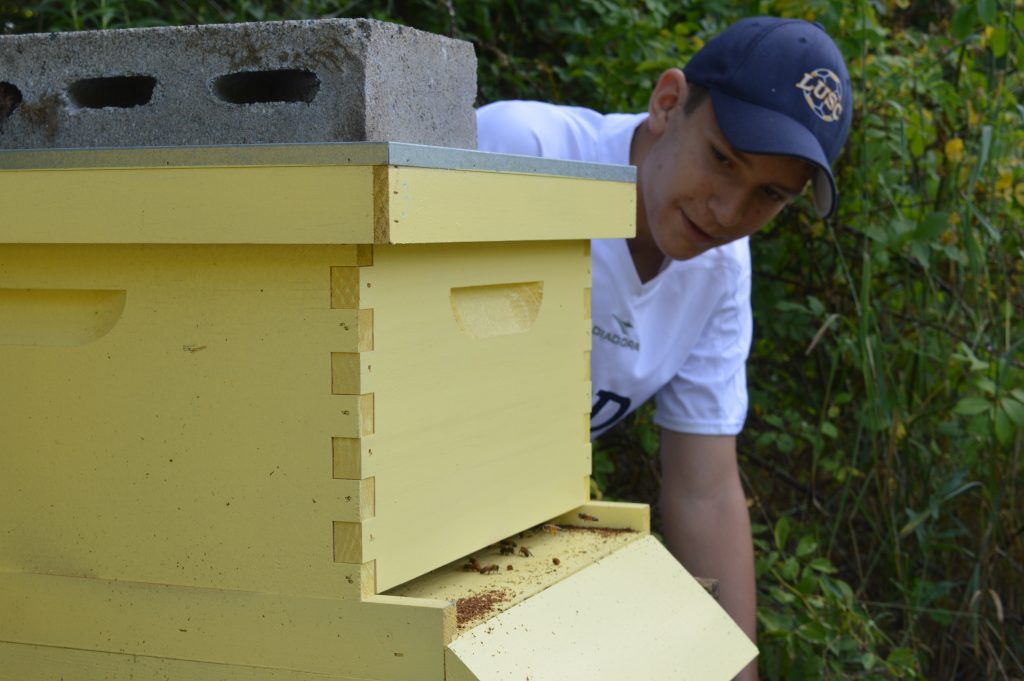
Lexington High School student Adam Winter measuring foraging effort of a hive.
Second, would bees fed the monofloral diet collect pollen from more diverse floral sources than bees fed the polyfloral diet? In contrast to bees fed a nutrient-rich polyfloral diet, bees fed a nutrient-deficient monofloral diet likely need to supplement their diet. A way to supplement your diet? Eat different foods! For this question, we installed pollen traps on our hives. The pollen traps allow the bees to forage freely but there is an extra barrier to get through when they return to the hive with pollen. Bees carry pollen back to the hive on their legs.
Video of honey bees returning to the hive with pollen
The pollen trap has bee-sized mesh holes that returning bees need to crawl through. Since the mesh holes are just bee-sized, the pollen pellets get knocked off their legs and fall into a drawer. The drawer can be pulled out from the back of the hive and we have our pollen samples!
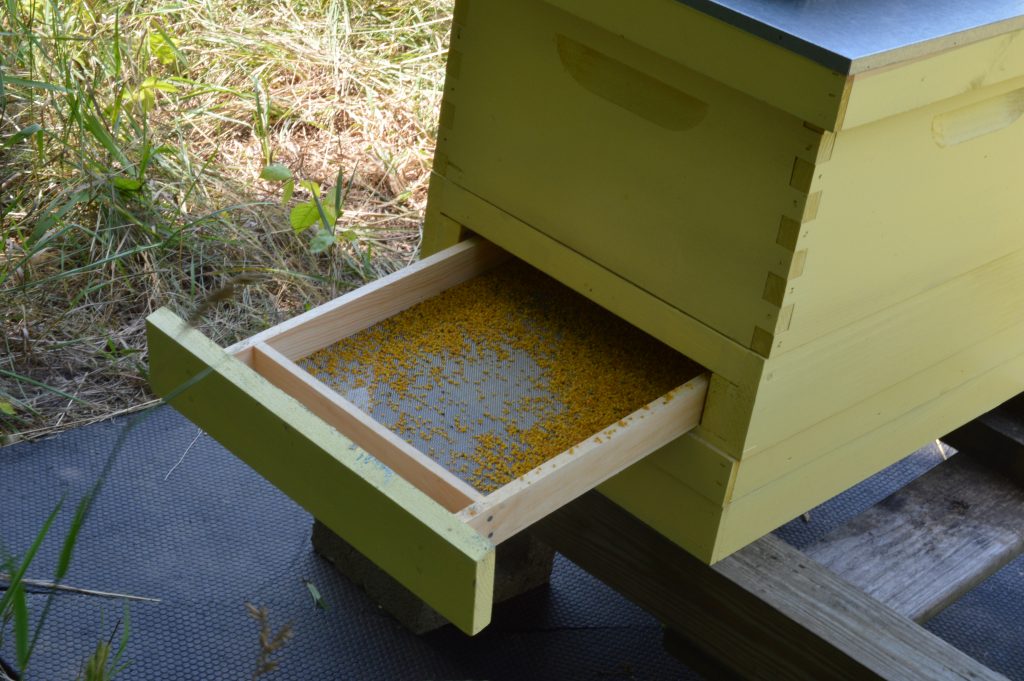
Pollen trap drawer full of pollen.
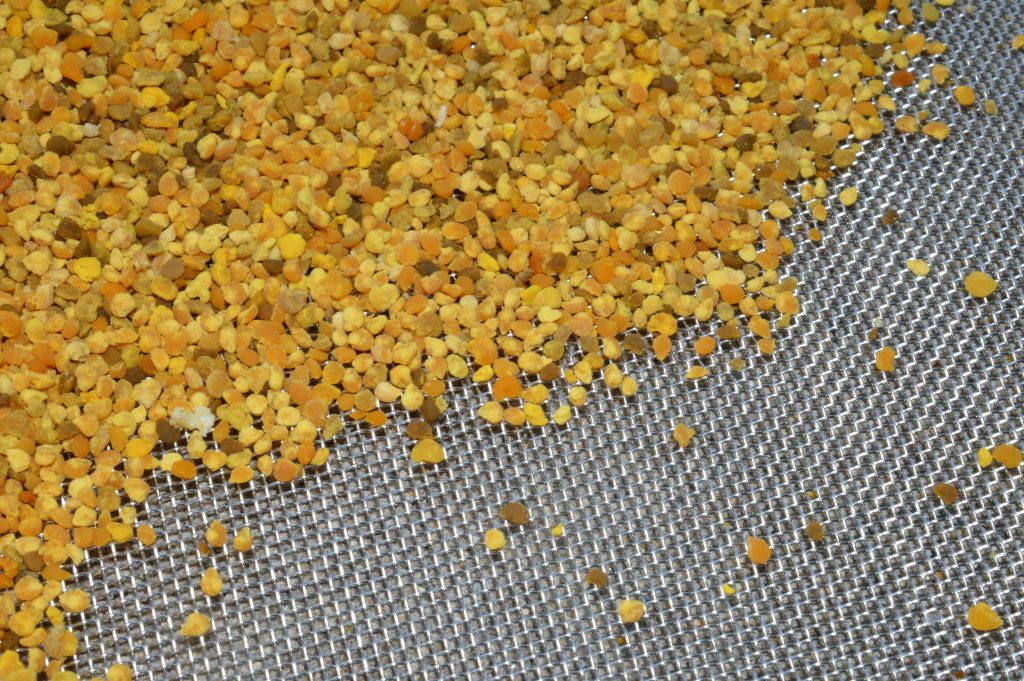
Close-up of inside the drawer of pollen.
Just last week, I sent our pollen samples out to Jonah Ventures, a company that will run DNA metabarcoding analyses on our samples. DNA metabarcoding allows Jonah Ventures to take our mixed sample of pollen, and identify which plants our bees collected pollen from. I should have that data back from Jonah Ventures by the end of the week!
The data analysis is ongoing so I don’t have any conclusive answers to our questions just yet but stay tuned!

